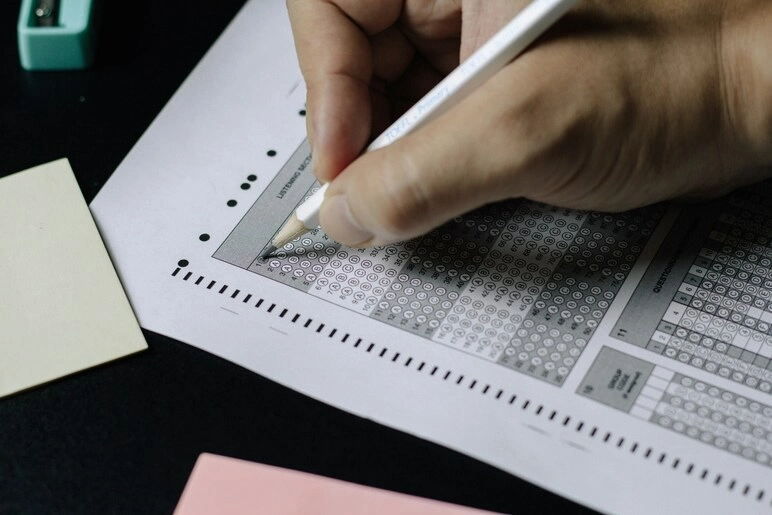
The SAT is likely already on the radar for any international student considering applying to universities in the U.S. As one of the most widely recognised college admissions tests, the SAT gives students around the world a common platform to showcase their academic potential.
In short, the SAT can open doors—both academically and financially—when applying to colleges in the U.S.
And now, with the introduction of the digital SAT, there are exciting new changes designed to make the experience more accessible, flexible, and student-friendly. It is coherent to fully grasp the SAT before moving forward.
Why is the SAT important?
The SAT is a standardised test that assesses your skills in reading, writing, and math. Its purpose is to help colleges evaluate applicants from diverse educational backgrounds using a common measure of academic readiness.
Its digital format makes it more accessible and adaptive to individual test-takers, designed to evaluate your readiness for college-level academics and is often used alongside school grades, personal essays, and other application materials.
No matter where a student is studying—be it in Dubai, Delhi, or Düsseldorf—taking the SAT is a valuable opportunity for international students to enhance their college applications and stand out in the admissions process. Here’s why:
- Global benchmark: It allows students from different countries and curricula to be assessed on a common scale.
- Improves admission chances: A strong SAT score can enhance an application and help the student stand out to competitive U.S. universities.
- Scholarship opportunities: Many institutions offer merit-based scholarships based on SAT performance.
- Language waivers: Some universities waive English proficiency requirements (namely TOEFL or IELTS) if an SAT score meets a certain threshold.
Now fully digital, the SAT is no longer a paper-based exam. Students take it on a computer or tablet at approved test centres, with multiple dates available each year. The digital format also brings a major change: adaptive testing. This means the questions adjust in difficulty based on the responses, allowing for a shorter, more tailored testing experience without sacrificing precision. The test is also shorter—just around two hours.
Who can take the SAT?
The SAT is open to any high school student, though it's most commonly taken by students in Grade 11 or 12, when college planning becomes a top priority. One of the best facets about the SAT is its flexibility—there are no official eligibility criteria. The College Board, which administers the test, doesn't set any minimum or maximum age limits. That means students can take the SAT whenever they feel ready and can retake it multiple times to aim for their best possible score.
Types of SAT Exams
While the SAT is the main test used for college admissions, the College Board offers a series of related assessments that help students prepare over time. These exams are designed for different grade levels and serve specific purposes, from early readiness checks to scholarship qualification.
The SAT is the primary exam for students in Grades 11 and 12. It’s used for college admissions, scholarship opportunities, and is widely accepted by universities in the U.S. and around the world.
The PSAT/NMSQT (Preliminary SAT/National Merit Scholarship Qualifying Test) is typically taken in Grade 11. It’s a helpful practice run for the SAT and also used to determine eligibility for the prestigious National Merit Scholarship—for U.S. students only.
The PSAT 10 is meant for students in Grade 10. It offers practice for the SAT and helps students and educators gauge academic progress without the pressure of official scores.
The PSAT 8/9 is geared toward students in Grades 8 and 9. It provides an early look at college and career readiness, helping students identify their strengths and areas to grow early on.
Each of these assessments plays a unique role in helping students build confidence and prepare step by step for the SAT and beyond. Whether you're just starting high school or nearing graduation, there's a version of the SAT experience designed to support your journey.
How can a student prepare for the Digital SAT?
Before scrambling on where to start, acknowledge that the success on the SAT starts with smart, focused preparation. Therefore, a few key strategies may help the student feel confident and ready on test day.
Start by getting familiar with the digital format. This includes practice using the digital tools, such as the built-in calculator and question navigation features, to avoid any feeling of unfamiliarity on test day.
The practice continues with time management. Learn how to pace properly and efficiently so that all questions can be filled in on time while still having time to review your work. At the height of the moment, a student may identify their weak spots. Take this as a sign to focus study time on areas requiring the most improvement, whether that’s algebra, grammar rules, or reading comprehension.
Don’t forget to stay up to date. Keep an eye on test dates, technical requirements, and any updates related to your local testing centre. Lastly, the SAT’s digital format might be confusing, so it’s best to use adaptive practice tests. The new format means traditional practice tests may not fully reflect the real experience. Look for digital, adaptive practice exams to prepare more effectively.
What else is there to know about the SAT?

The SAT is divided into two main sections: Reading & Writing, and Math. Each section is taken in two parts, and a test taker’s performance in the first part helps determine the difficulty of the second.
Scoring wise, the SAT is scored out of 1600, with 800 points each for the Reading & Writing and Math sections. Test takers can take the test multiple times throughout the year at international test centres, and most universities will consider the highest scores—some even use “superscoring”, combining the best section scores from different test dates.
Another advantage? The SAT scores can be sent directly to up to four universities for free if chosen during registration. This is a convenient way to make sure application materials are complete and on time.
Where can a student take the SAT exam in Indonesia?
Multiple test centres are available across the country. These centres are located in major cities such as Jakarta, Bandung, Surabaya, Medan, and Bali, making it more convenient for students throughout Indonesia to access the exam.
Currently, there are 19 official SAT test centres in Indonesia, hosted by a range of international and private schools. Some well-known locations include Jakarta International School, Bali Island School, Surabaya Intercultural School, and Bandung Independent School, among others. These centres are approved by the College Board and meet the standards required to administer the SAT in its digital format.
It’s important to remember that test centre availability can vary depending on the test date. Not all locations have the SAT on every testing occasion, and some may fill up quickly. That’s why it’s always a good idea to check the most current and accurate list on the College Board website before registering.
Below are the current SAT test centres in Indonesia:
- ACG School Jakarta (Jakarta Selatan)
- Bali Island School (Denpasar, Bali)
- Bandung Alliance Intercultural School (Bandung)
- Bandung Independent School (Bandung)
- Beacon Academy (Jakarta)
- Bina Bangsa School Semarang (Semarang)
- Global Jaya School (Bintaro, Tangerang)
- Jakarta International School (Jakarta Selatan)
- Jakarta Multicultural School (Tangerang Selatan)
- Medan Independent School (Medan)
- Mountainview Christian School (Salatiga)
- Pribadi Bilingual Boarding School, Bandung Campus (Bandung)
- Pribadi Bilingual Boarding School, Depok Campus (Depok)
- Sampoerna Academy Medan (Medan)
- Sekolah Ciputra (Surabaya)
- Sekolah Pelita Harapan (Tangerang)
- Sekolah Victory Plus (Bekasi)
- Semesta Bilingual Secondary School (Semarang)
- Surabaya Intercultural School (Surabaya)




 Mirella Pandjaitan
Mirella Pandjaitan
 Dec 12, 2025
Dec 12, 2025